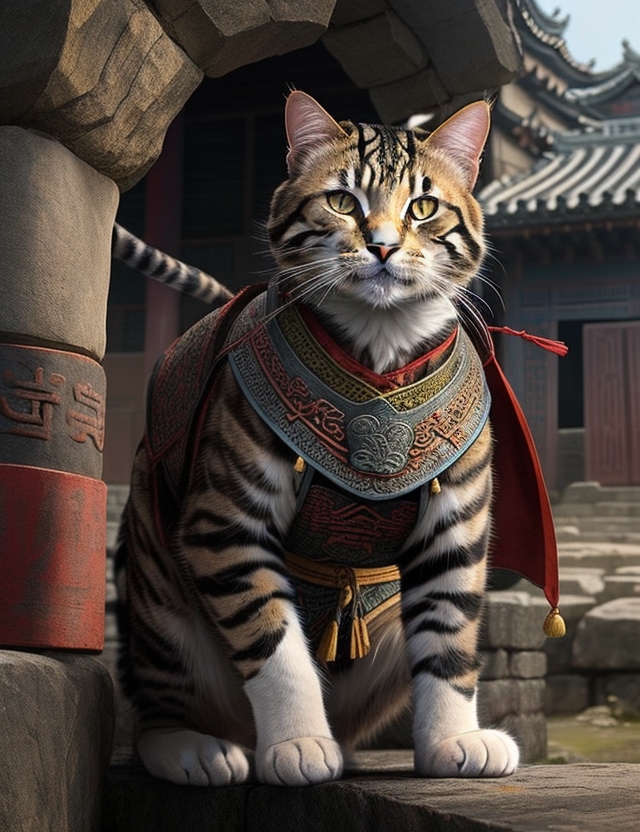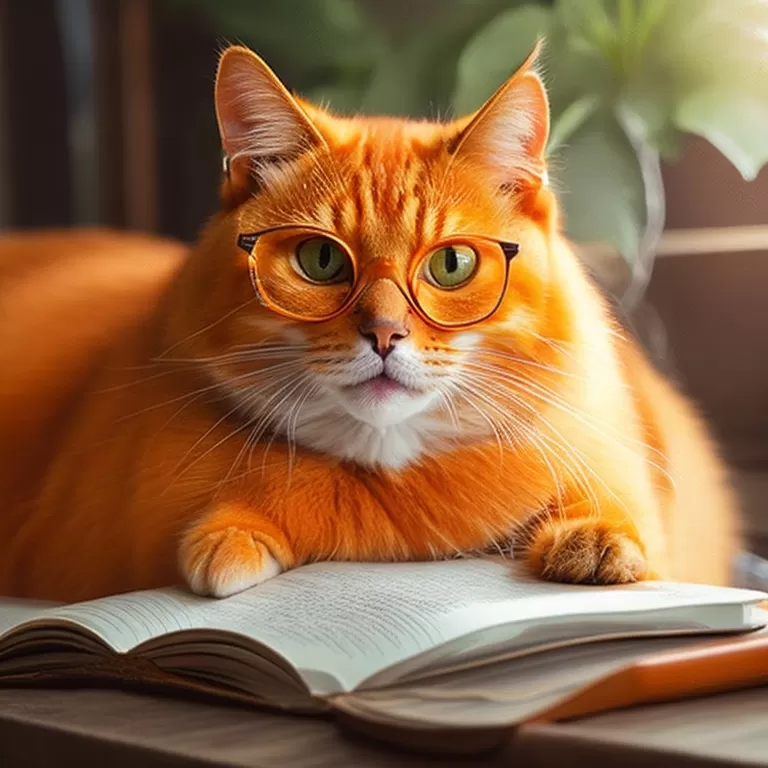
Cats are one of the most popular and beloved pets in the world today. But did you know that cats have a long and fascinating history in ancient civilizations, especially in China? In this article, we will explore how cats were revered, worshipped, and protected by the ancient Chinese people, and how their influence can still be seen today.
The Origin of Cats in China
The origin of cats in China is shrouded in mystery. Some scholars believe that cats were domesticated in China as early as the Neolithic period, around 10,000 years ago. They base their argument on archaeological evidence, such as cat bones and pottery found in various sites across China. These findings suggest that cats were kept as pets or companions by the early farmers and villagers.
Others suggest that cats were introduced to China from India or Persia by traders and travelers along the Silk Road, around 2000 years ago. They point to historical records, such as the Book of Han and the Book of Wei, which mention the arrival of foreign cats to China during the Han and Wei dynasties. These cats were different from the native Chinese cats, as they had longer fur and more varied colors. They were also valued for their ability to catch mice and rats that plagued the granaries and warehouses.
Regardless of their origin, cats quickly became popular and valued animals in ancient China. They adapted well to the climate and environment of China, and developed a close relationship with the human population. Cats were seen as useful and beneficial creatures that helped with agriculture, pest control, and companionship.
The Symbolism of Cats in Chinese Culture
Cats have a rich and complex symbolism in Chinese culture. They are associated with various aspects of life, such as luck, prosperity, longevity, beauty, elegance, intelligence, independence, and mystery. Cats are also linked to different deities and spirits, such as Li Shou, the god of agriculture and fertility; Mao Gong, the god of justice and law; Zhen Wu, the god of war and martial arts; and Bai Hu, the white tiger of the west.
One of the most common symbols of cats in Chinese culture is the lucky cat or the fortune cat. This is a cat figurine or statue that is often displayed in homes or businesses to attract good luck and wealth. The lucky cat usually has one paw raised in a waving gesture, which is believed to invite customers and money. The lucky cat can also have different colors and accessories that represent different meanings. For example, a white cat symbolizes purity and happiness; a black cat symbolizes protection and warding off evil; a red cat symbolizes love and romance; a gold cat symbolizes wealth and prosperity; and a green cat symbolizes health and harmony.
Another common symbol of cats in Chinese culture is the zodiac sign of the tiger. The tiger is one of the 12 animals that represent the Chinese lunar calendar. People born in the year of the tiger are said to have some of the characteristics of cats, such as courage, charisma, leadership, ambition, passion, and generosity. The tiger is also considered a powerful and auspicious animal that can bring good fortune and success.
The Worship of Cats in Ancient China
Cats were not only admired but also worshipped in ancient China. Many temples and shrines were dedicated to cats, where people would offer prayers and sacrifices to them. One of the most famous cat temples was located in the city of Yangzhou, where a large bronze statue of a cat was erected. The statue was said to have magical powers, such as granting wishes, curing diseases, and protecting the city from disasters. People would flock to the temple to pay their respects and seek blessings from the cat god.
Another famous cat temple was located in the city of Nanjing, where a stone stele was inscribed with a poem praising cats. The poem was written by Emperor Qianlong of the Qing dynasty, who was an avid cat lover. The poem reads:
A thousand years I've roamed upon this earth, And many things I've seen both strange and rare; But naught have I encountered anywhere That can compare with you for grace and worth. You are the finest product of the earth, The peerless flower of all creation fair; And whether you are far away or near My heart is filled with wonder and with mirth.
The poem expresses the emperor's admiration and affection for cats, and his recognition of their unique and noble qualities.
The Protection of Cats in Ancient China
Cats were not only worshipped but also protected in ancient China. Cats were considered sacred animals that should not be harmed or killed. Anyone who mistreated or killed a cat would face severe consequences, such as fines, imprisonment, or even death. Cats were also regarded as guardians of the home and the family. They would keep away evil spirits, pests, and thieves. People would treat their cats with kindness and care, and provide them with food, shelter, and toys.
One of the most famous stories of cat protection in ancient China is the legend of Li Mao, the cat general. The legend tells that during the Tang dynasty, there was a general named Li Yuanba who loved cats very much. He had a cat named Li Mao, who was very smart and loyal. One day, Li Yuanba was ambushed by enemies and captured. Li Mao managed to escape and ran back to the capital to inform the emperor. The emperor then sent a rescue mission to save Li Yuanba. Li Mao also joined the mission and fought bravely against the enemies. He managed to free Li Yuanba and bring him back safely. The emperor was so impressed by Li Mao's courage and loyalty that he promoted him to a general and gave him a medal of honor.
The Art of Cats in Ancient China
Cats were not only protected but also celebrated in ancient China. Cats were a common subject of art and literature, where they were depicted with grace and beauty. Many famous painters and poets created masterpieces featuring cats, such as Zhang Zeduan's Along the River During the Qingming Festival, Liu Ji's Cat Playing with a Butterfly, Su Shi's Ode to a Red Cliff, and Li Bai's Drinking Alone Under the Moon. Cats were also featured on various objects and ornaments, such as pottery, jade, silk, bronze, coins, and seals.
One of the most famous examples of cat art in ancient China is the painting Cat and Sparrow by Zhao Mengfu of the Yuan dynasty. The painting shows a cat lying on a rock, looking at a sparrow perched on a branch. The cat's eyes are wide open and alert, while the sparrow's eyes are half closed and relaxed. The painting captures the contrast between the predator and the prey, as well as the harmony between them. The painting is also a metaphor for the relationship between the Mongol rulers and the Chinese people at that time.
The Legacy of Cats in Ancient China
Cats have left a lasting legacy in ancient China. Their influence can still be seen today in many aspects of Chinese culture and society. For example, cats are still considered lucky animals that bring fortune and happiness. Many people keep cats as pets or display cat figurines or paintings in their homes or businesses. Cats are also still associated with various festivals and traditions, such as the Lantern Festival, the Mid-Autumn Festival, and the Chinese New Year. One of the most iconic symbols of Chinese culture is the Maneki Neko or the beckoning cat, which is believed to attract customers and wealth.
Cats have also inspired many modern artists and writers who continue to celebrate their charm and personality. For example, Xu Beihong, one of the most famous painters of modern China, created many realistic and expressive paintings of cats, such as Cat Drinking Water, Cat Catching a Mouse, and Cat Resting on a Chair. Another example is Lao She, one of the most famous writers of modern China, who wrote a novel called Cat Country, which is a satire of Chinese society under foreign invasion.
In conclusion, cats have played an important role in ancient Chinese civilization. They were revered, worshipped, and protected by the ancient Chinese people. They were also a source of inspiration and joy for many artists and writers. Cats have enriched and influenced Chinese culture for thousands of years.
References:
